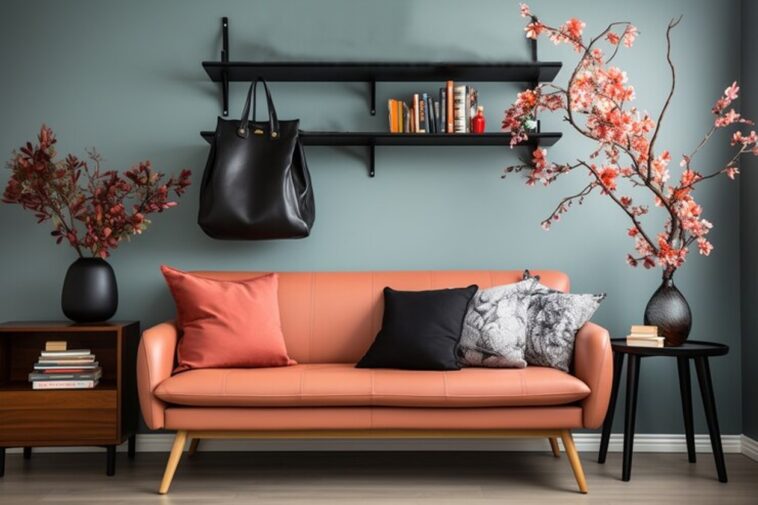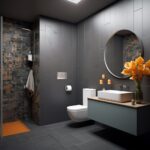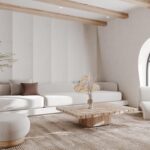In the world of home interior design, creating a space that not only looks aesthetically pleasing but also feels comfortable and functional is a true art form. Whether you’re a seasoned designer or a homeowner looking to enhance your living space, understanding the key elements of home interior design is essential. In this comprehensive guide, we’ll explore the fundamental aspects of interior design that can transform any space into a masterpiece.
Home interior design goes far beyond aesthetics; it’s about creating an environment that reflects your personality, meets your functional needs, and enhances your quality of life. To embark on this journey, let’s delve into the essential elements of interior design that can transform your space.
Explore the Contents
- 1 Color Palette: The Foundation of Design
- 2 Furniture Selection: Form and Functionality
- 3 Layout and Space Planning
- 4 Lighting: Setting the Mood
- 5 Textures and Materials
- 6 Art and Accessories: Adding Personality
- 7 Window Treatments: Enhancing Ambiance
- 8 Flooring: The Foundation Underfoot
- 9 Storage Solutions: A Clutter-Free Space
- 9.1 Maximizing Space Utilization
- 9.2 Reducing Visual Chaos
- 9.3 Efficient Organization
- 9.4 Preserving Valuables
- 9.5 Streamlining Daily Routines
- 9.6 Enhancing Aesthetics
- 9.7 Creating Multifunctional Spaces
- 9.8 Personalizing Storage
- 9.9 Sustainable Living
- 9.10 Future-Proofing Your Home
- 9.11 Decluttering Benefits
- 10 Creating Focal Points
- 11 Greenery and Nature Integration
- 12 The Role of Technology
- 13 Sustainability in Design
- 14 Conclusion
- 15 FAQS
- 15.1 Q1: How can I choose the perfect color palette for my home?
- 15.2 Q2: What are some space-saving furniture ideas for small spaces?
- 15.3 Q3: What is the importance of proper lighting in interior design?
- 15.4 Q4: Are there any sustainable flooring options available?
- 15.5 Q5: How can I integrate technology seamlessly into my interior design?
Color Palette: The Foundation of Design
When it comes to home interior design, selecting the right color palette is akin to choosing the canvas for a masterpiece. The colors you choose have a profound impact on the overall aesthetics and mood of your space. Here’s why the color palette is considered the cornerstone of any design project:
Setting the Tone
Colors have the unique ability to evoke emotions and set the tone of a room. Warm colors like reds and yellows can create a cozy and inviting atmosphere, while cool colors like blues and greens lend a sense of calm and serenity.
Read More: 7 Simple Industrial Room Design Ideas That Will Make Your Home Look More Expensive
Creating Visual Harmony
A well-thought-out color scheme ensures that all the elements in a room harmonize effortlessly. It brings together the walls, furniture, accessories, and even the flooring into a cohesive and visually pleasing whole.
Highlighting Key Features
Colors can be used strategically to draw attention to specific features or architectural elements in your home. For instance, a bold accent wall can make a statement and become a focal point.
Expanding or Constricting Space
Colors have the power to influence our perception of space. Lighter shades can make a room appear more spacious, while darker hues can create a cozy, intimate feel.
Reflecting Personal Style
Your choice of colors reflects your personal style and preferences. Whether you lean towards a minimalist, monochromatic palette or prefer a vibrant and eclectic mix, your color choices convey your unique taste.
Adapting to Functionality
Different rooms serve different purposes, and your color palette can adapt accordingly. For example, a home office might benefit from soothing, productivity-enhancing colors, while a living room may thrive with warm, inviting tones.
Timelessness vs. Trends
Consider whether you want a timeless look that won’t go out of style or if you’re open to following current design trends. Keep in mind that trendy colors may need updating more frequently.
Testing Before Committing
Before painting entire walls, it’s a good idea to test paint samples in the actual room to see how they look in different lighting conditions. This ensures you’re happy with the chosen colors.
Balancing Bold and Neutral
A well-balanced color palette often includes a mix of bold and neutral colors. Neutrals like whites, grays, and beiges can serve as a backdrop for bolder accent colors.
Flexibility for Future Changes
Consider the longevity of your chosen colors. If you like to change decor frequently, it may be wise to choose neutral colors for larger, more permanent elements and inject color through accessories.
Furniture Selection: Form and Functionality
Furniture is not just for sitting; it’s a vital element of design. Discover how to choose pieces that combine form and functionality seamlessly.
Layout and Space Planning
Effective space planning ensures that your interior is both functional and visually appealing. Explore techniques for optimizing your space layout.
Lighting: Setting the Mood
Lighting is the unsung hero of interior design. Uncover how different lighting techniques can transform the ambiance of your home.
Textures and Materials
Elements of Home Interior Design: Textures and materials add depth and character to your space. Learn how to mix and match textures to create a captivating interior.
Art and Accessories: Adding Personality
Elements of Home Interior Design: Personalize your space with art and accessories that speak to your style. Discover how to curate a collection that tells your story.
Window Treatments: Enhancing Ambiance
Elements of Home Interior Design: Window treatments do more than provide privacy; they can frame your view and control light. Find out how to choose the right window treatments for your space.
Flooring: The Foundation Underfoot
Elements of Home Interior Design: Flooring is the canvas on which your interior design masterpiece unfolds. Explore various flooring options and their impact on your home.
Storage Solutions: A Clutter-Free Space
Elements of Home Interior Design: In the quest for an organized and clutter-free home, effective storage solutions play a pivotal role. The ability to stow away items neatly not only enhances the aesthetics of your living spaces but also contributes to a sense of order and tranquility. Here’s why storage solutions are crucial for maintaining a clutter-free environment:
Maximizing Space Utilization
Storage solutions enable you to make the most of your available space. Whether you have a compact apartment or a sprawling house, optimizing storage ensures that every nook and cranny serves a purpose.
Reducing Visual Chaos
Clutter can overwhelm the senses, making a space feel chaotic and disorganized. Well-planned storage keeps your belongings out of sight, creating a visually pleasing and calming atmosphere.
Efficient Organization
Storage solutions allow you to categorize and organize your possessions efficiently. You can create designated areas for different items, making it easier to find what you need when you need it.
Preserving Valuables
Proper storage protects your valuable and cherished belongings from dust, damage, and wear. Items like jewelry, collectibles, and delicate fabrics benefit from secure storage solutions.
Streamlining Daily Routines
Incorporating storage into high-traffic areas like the kitchen and bathroom streamlines daily routines. Everything you need is within easy reach, saving you time and effort.
Enhancing Aesthetics
Built-in storage solutions, such as custom cabinetry or shelving units, can be designed to complement your interior decor seamlessly. They not only serve a functional purpose but also contribute to the overall aesthetics of your home.
Creating Multifunctional Spaces
Smart storage solutions enable the transformation of spaces. A guest room can double as a home office with the right storage, or a living room can convert into a guest bedroom when needed.
Personalizing Storage
Storage solutions can be tailored to your specific needs and preferences. Whether you require a walk-in closet, a pantry with adjustable shelves, or a bookshelf that accommodates your collection, customization is key.
Sustainable Living
Some storage solutions incorporate sustainable materials and practices, aligning with eco-conscious living. Consider eco-friendly options to reduce your carbon footprint.
Future-Proofing Your Home
Investing in storage solutions is a long-term strategy. As your needs change over time, adaptable storage systems can evolve with you, ensuring your home remains clutter-free and organized.
Decluttering Benefits
Regularly purging unnecessary items and organizing your belongings through storage solutions can lead to a more minimalist and mindful lifestyle, reducing the accumulation of excess stuff.
Creating Focal Points
Elements of Home Interior Design: Focal points draw the eye and add visual interest. Learn how to create captivating focal points in your interior.
Greenery and Nature Integration
Elements of Home Interior Design: Bringing nature indoors can breathe life into your home. Explore the benefits of incorporating greenery into your interior design.
The Role of Technology
Elements of Home Interior Design: Technology has revolutionized interior design. Stay updated on the latest tech trends for smart and functional homes.
Sustainability in Design
Elements of Home Interior Design: As we become more environmentally conscious, sustainable design practices are gaining prominence. Explore eco-friendly options for your interior.
Read More: Modern Art Deco Interior Design in 2023
Conclusion
Room the selection of the perfect color palette to the art of space planning, from the importance of lighting to the impact of storage solutions, each element contributes to the overall success of your interior design project. Remember that your home should not only reflect your personality and style but also cater to your specific needs and preferences.
As you embark on your interior design adventure, keep in mind that trends may come and go, but the principles discussed here remain timeless. Whether you’re looking to create a minimalist haven, a cozy retreat, or an eclectic masterpiece, these principles can be adapted to suit your vision.
So, go ahead and embrace the elements of home interior design with confidence. Experiment, personalize, and let your creativity flow. Your home is a canvas, and you are the artist. With the right tools and knowledge, you can craft a living space that not only impresses guests but also nurtures your well-being.
FAQS
Q1: How can I choose the perfect color palette for my home?
A1: Choosing the perfect color palette for your home involves considering your personal preferences, the mood you want to create in each room, and the existing elements like furniture and flooring. Start by selecting a base color and then complement it with accent shades. It’s often helpful to test paint samples in your space to see how they look in different lighting conditions before making a final decision.
Q2: What are some space-saving furniture ideas for small spaces?
A2: When dealing with limited space, opt for multifunctional furniture pieces like sofa beds, wall-mounted desks, or extendable dining tables. Vertical storage solutions like tall bookshelves and wall-mounted cabinets can also maximize space. Additionally, consider furniture with built-in storage compartments to reduce clutter.
Q3: What is the importance of proper lighting in interior design?
A3: Proper lighting is crucial in interior design as it can significantly impact the ambiance of a room. Different types of lighting, such as ambient, task, and accent lighting, serve various purposes. Adequate lighting not only enhances visibility but also sets the mood, highlights key features, and creates a welcoming atmosphere in your home.
Q4: Are there any sustainable flooring options available?
A4: Yes, there are several sustainable flooring options to consider. Bamboo and cork flooring are renewable resources that make eco-friendly choices. Additionally, reclaimed wood and recycled glass tiles are environmentally conscious options. Always look for certifications like FSC (Forest Stewardship Council) when choosing sustainable flooring materials.
Q5: How can I integrate technology seamlessly into my interior design?
A5: Integrating technology into interior design involves considering both functionality and aesthetics. Conceal wires and devices whenever possible to maintain a clean look. Smart home systems can control lighting, heating, and security, enhancing convenience and energy efficiency. Choose technology that aligns with your lifestyle and design preferences.



